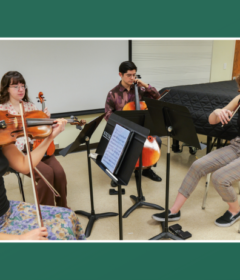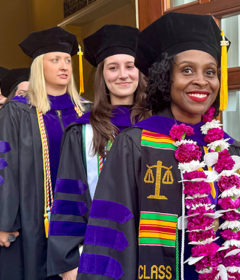The impacts of hydrofracking
Stetson Law students learned more about the impacts of hydrofracking during a Feb. 16 presentation about “Natural Gas Development and Hydrofracking: Environmental Risks and Legal Responses.”
The fracking or hydraulic fracturing process involves pumping millions of gallons of water, sand, and toxic chemicals hundreds of feet underground to break up rock and release tiny pockets of gas or oil. The extracted gas or oil is then used as an energy source.
Geologist Mauricio Roma and Watershed Inspector General Philip Bein discussed whether there is a need for a legal response to hydrofracking and natural gas development.
The event, co-sponsored by the Institute for Biodiversity Law and Policy and the Environmental Law Society, was the second in the Edward and Bonnie Foreman Biodiversity Lecture Series this semester.
Read more in a news article about the presentation at Stetson on “Natural Gas Development and Hydrofracking: Environmental Risks and Legal Responses.”
The final presentation in Stetson’s lecture series takes place on Feb. 21 at 12 p.m. in the Great Hall on the Stetson Law Gulfport campus.
Judge Judith M. Barzilay of the U.S. Court of International Trade will discuss the Shrimp/Turtle and Tuna/Dolphin cases, and others involving the intersection of environmental protection and international trade. The Institute for Biodiversity Law and Policy, Environmental Law Society and Maritime Law Society are co-sponsoring this lecture.
RSVP to attend the lecture to Marcela Bonells by Feb. 19 at [email protected].



